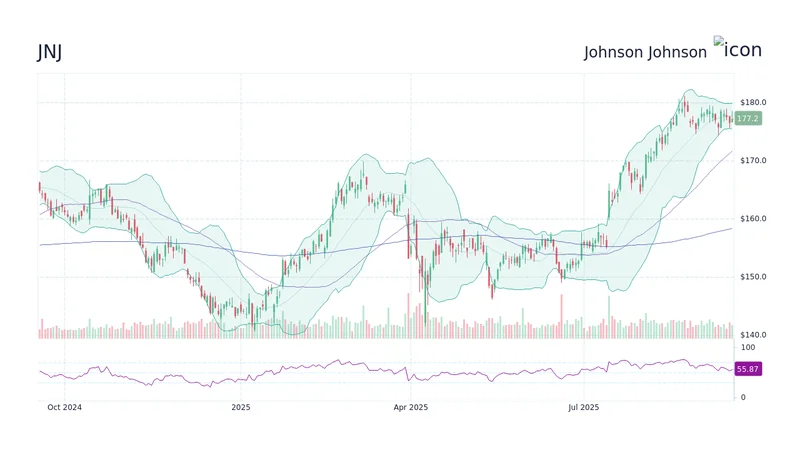Article Directory
So, Johnson & Johnson is having a “catapult year.”
That’s the line their CEO is pushing, and it’s the kind of slick, MBA-approved buzzword that makes my skin crawl. A catapult year. You can just picture the PowerPoint slide, can’t you? A slick arrow soaring upwards over a bar chart. Growth. Innovation. Synergy. All the empty calories of corporate-speak designed to make Wall Street analysts nod along like bobbleheads.
But while the suits in New Jersey are busy high-fiving over their "catapult," the FDA just strapped a rocket-powered warning label to one of their flagship cancer drugs. And not just any warning. The agency’s strictest possible warning.
They want to focus on six treatment areas. They're spinning off businesses. They're setting themselves up for the future. It all sounds great until you realize the catapult might be aimed directly at a brick wall.
Black Boxes and Balance Sheets
Let’s get real about this Carvykti situation. The drug is a marvel of modern science, no doubt. It uses a patient’s own T-cells, supercharges them in a lab, and sends them back into the body to hunt down multiple myeloma. It’s the kind of stuff we used to see in sci-fi movies.
But now, the FDA has mandated a "black box" warning—the skull and crossbones of the pharma world—because this miracle cure can also cause a fatal gut infection. You read that right. The treatment designed to save your life from a brutal blood cancer might kill you with a bacterial infection in your stomach.
The official line, of course, is that the "overall benefit of the medication still surpasses the risks." It's a classic line, one that's been polished to a high shine in boardrooms for decades. But I have to ask: whose benefit are we really talking about? And who is calculating that risk? When a patient is staring down the barrel of a terminal diagnosis, are they really in a position to weigh the odds of a secondary fatal infection? Or are they just grabbing onto the only life raft they're offered, regardless of how leaky it is?

This isn’t just a PR problem; its a fundamental question about the business of hope. How many acceptable losses are factored into the launch of a multi-billion dollar drug? I’m genuinely asking. Because from where I’m sitting, it looks like a hell of a gamble, and the patients are the ones putting up all the chips.
The Great Patent Cliff Treadmill
The Carvykti warning is the immediate fire, but the whole J&J house is built on a foundation of perpetual anxiety. The real engine driving this “catapult year” isn’t some bold new vision. It's fear. Specifically, the fear of the patent cliff.
Their biggest cash cow, Stelara, recently lost its patent protection. This is the boogeyman for every pharma giant. For years, you have a monopoly on a drug that prints money. Then, poof. The patent expires, generics flood the market, and your revenue stream dries up faster than a puddle in the desert.
So what do you do? You get on the treadmill. J&J's grand strategy, the one analysts seem to love, is basically a frantic scramble to buy or develop the next thing before the last thing becomes worthless. It's a brilliant plan. No, 'brilliant' isn't the word—it's a desperate plan. It’s the only plan you have when you're too big to innovate organically at the speed you need to grow.
This is where the analogy of a plate-spinner comes to mind. J&J isn't building a stable empire; they're a performer on a stage, frantically running between dozens of spinning plates balanced on sticks. Stelara is wobbling. So they rush to get a new bladder cancer drug spinning, which they bought a few years ago. They snatch up another immunology drug, hoping to get it spinning next year. All the acquisitions, all the talk of "synergy" and focusing on "higher growth areas," is just the frantic motion of a performer trying to keep all the plates from crashing to the ground.
It’s an impressive act, for sure. But is it a sustainable business model, or just a delay of the inevitable crash? Maybe I’m the cynical one here. Maybe this is just the cost of doing business at this scale. But it feels less like a catapult and more like a high-wire act with no safety net.
So, What Are We Actually Buying Here?
Let’s cut through the noise. When analysts rate J&J a "Moderate Buy"—a position some hold even as reports show J&J stock falls on earnings: Why this analyst is still bullish—and executives talk about a "catapult year," they aren't selling you a story of medical breakthroughs. They're selling you a story of financial engineering. They're betting that the company can buy new revenue streams faster than the old ones die off, and that the headlines about acquisitions will be louder than the ones about fatal side effects. It’s a bet on corporate agility, not human health. And while the stock might inch up a few percentage points, it’s worth asking what, exactly, is being catapulted into the future. From here, it looks like the same old game of risk, revenue, and hoping for the best.
